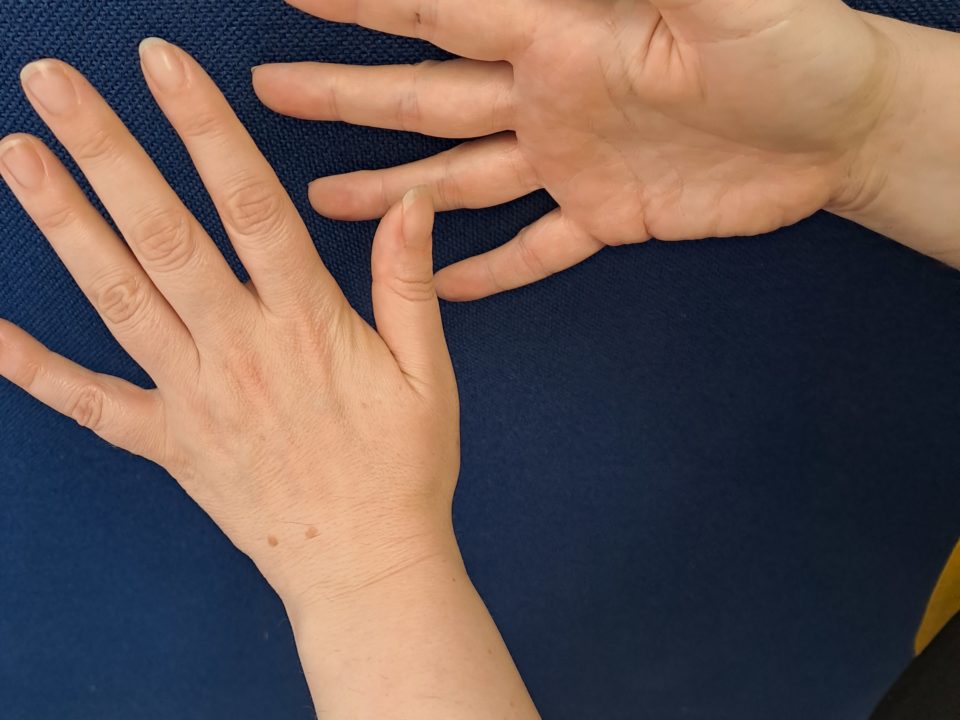
Board member with Experience in the Deaf Community and/or Sign Language Interpreting
11th February 2021
Sign Language Interpreting Service welcomes New Chairperson Rónán Lowry
4th August 2021Sign Language Interpreting Services maintains a vital lifeline for Deaf citizens to including GP access, and Remote Interpreting
Sign Language Interpreting Services maintains a vital lifeline for Deaf citizens to including GP access, and Remote Interpreting
“2020 was an extremely difficult year for all, including Ireland’s Deaf community. SLIS Sign Language Interpreting Service worked hard to continue to provide a vital lifeline for Deaf citizens linking them and service providers to quality ISL interpreting through our referral service, GP access, and the Irish Remote Interpreting Service (IRIS)” Caroline McGrotty, Chairperson of SLIS – Sign Language Interpreting Service, said at the SLIS AGM.
SLIS points to some very significant achievements in the last year including:
- SLIS opened the Register for Irish Sign Language Interpreters (RISLI), on 23/12/2020, following three years of consultation and development with the Deaf and Interpreter communities and CIB. SLIS continues to develop and exercise the underlying quality assurance scheme, and looks forward to completing this task by the end of 2022. This is the timeframe of the current National Disability Inclusion Strategy (NDIS) and provides policy makers / funders the opportunity to consult and decide about where the register will sit in the sector thereafter.
- Extensive work in 2020 enabled SLIS, in cooperation with CIB, to establish and trial a pilot voucher scheme for ISL users to access to interpreting for social and cultural events and activities, from 30 June 2021 to 30 September 2021. SLIS hope evaluation of this pilot scheme will inform a permanent scheme to meet the requirements of section 9 of the ISL Act.
- SLIS continued development of the remote interpreting service IRIS. IRIS was established in 2011 and has grown with the support and funding of CIB and NDIS into a full time professional service. In 2020, IRIS was an essential link for Ireland’s Deaf community to services including the HSE Corona Helpline, arranging Covid consultations, tests and contact tracing. In addition, SLIS and CIB piloted an App from January – June 2021, which hopefully will be made a permanent development of IRIS. Today, IRIS provides an average of 936 interpreting assignments per month and is open 9am to 8pm Monday to Friday, as well as weekends, and bank holidays during the COVID restrictions. SLIS look forward to enhanced collaboration with CIB on technology development on the service.
- SLIS collaboration with the HSE also saw increased access and provision of ISL interpreting to GP’s and primary care services for all Deaf citizens in 2020.
“The commitment of SLIS staff in keeping all services working remotely during the COVID pandemic has been commendable” Caroline McGrotty highlighted. “It is timely to take a proactive approach to consolidating on success to date by fostering stable services for Ireland’s Deaf Community including secure staffing and resourcing arrangements.”
In launching the SLIS annual report 2020, Caroline McGrotty also thanked the SLIS board and CIB for their efforts in difficult circumstances and looked forward to continuing a shared journey to fuller social inclusion for Ireland’s Deaf community and enhanced interpreting services.
For media queries please contact:
John Stewart, National Manager SLIS,
087 650 6651 Email john.stewart@slis.ie
Sign Language Interpreting Service (SLIS) was established in 2007 through the Citizens Information Board. Our vision is to ensure that Deaf people live as full and equal citizens
SLIS works to enhance easy access to high quality sign language interpreting to public, social and other services relevant to the everyday lives of Deaf citizens who are users of ISL, through the provision of core SLIS services.
SLIS services – what we do
- A Referral Service – to identify ISL interpreters and link to your communication needs. – Text: 087 980 6996 Email: bookings@slis.ie
- Access service – to support the Deaf community overcome access barriers to interpreting – Text: 087 980 6996 Email: bookings@slis.ie
- GP access – to arrange interpreting for GP / primary care appointments, with the HSE Text: 087 980 6996 Email: bookings@slis.ie
- Social fund – to arrange and pay for interpreters for funerals and hardship cases Text: 087 980 6996 Email: bookings@slis.ie
- 24/7 emergency service for interpreters – legal or medical emergencies only – Text: 087 672 5179
- Support quality and the operation of a national register of sign language interpreting website – risli.ie Email: admin@rilsi.ie
- SLIS is trialling a “Voucher Scheme” for access to interpreting for Social and cultural activities – Website www.slis.ie/voucher, Email: bookings@slis.ie
- IRIS – Irish Remote Interpreting Service
- To book an appointment online, https://iris2.gettimely.com/
- Text 086 012 5900
- Email remote@slis.ie
In 2021, IRIS and CIB piloted a bespoke software application for IRIS, which is currently being evaluated.
SLIS is funded and supported by the Citizens Information Board
About The Deaf Community
The Deaf community of 5,000[1] Irish Sign Language users need Irish Sign Language interpreting to facilitate access to public information and commercial services. Deaf ISL users are 3 times more likely to have no formal education or to have primary education as their highest education level. The participation rate of Deaf in the labour force is 58%, but there is an unemployment rate of 25% – three times the national average[2]. The Irish Deaf Society estimates 80% of the Deaf community who have ISL as their first language have significant literacy difficulties in English. This Deaf ISL community tell us that
- Sign language interpreters reduce communication barriers to equal treatment
- Remote interpreting services, such as IRIS, are especially useful because of the limited availability of sign language interpreters in this country.
[1] Irish Deaf Society website www.irishdeafsociety.ie see also CIB Report 2019, Oireachtas report 2016
[2] Census 2011, Central Statistics Office Dublin.
About Irish Sign Language
Irish Sign Language (ISL) is the sign language of Ireland’s deaf community. ISL is a visual language with its own linguistic structures, syntax and characteristics. Just as spoken languages differ from country to country, ISL is different to French, Spanish or British sign languages. It is an indigenous, dynamic and beautiful language, central to the Deaf culture and Deaf identity of this country. ISL is the first language of many of Ireland’s Deaf community and it is their preferred means of communication. ISL should never be considered a lesser or compensatory language and the Deaf community celebrated the state’s recognition of the language in 2020 through the ISL Act and the ratification of the UNCRPD. ,
What is the Irish Remote Interpreting Service (IRIS?)
IRIS provides an online video link to an ISL / English interpreter using video link software applications (e.g. Skype for Business, Zoom). IRIS began with a pilot scheme in January 2011 as collaboration between three Deaf organisations – the Irish Deaf Society (IDS), Chime and Sign Language Interpreting Service (SLIS). The IRIS interpreter joins a meeting by video link and translates between ISL and spoken English for the participants. The Deaf person and the service provider need decent internet access, webcam and speakers to use IRIS. The service is supported and funded by the Citizens Information Board.




